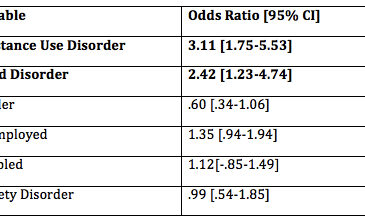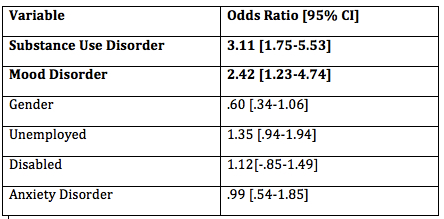A US admiral and nuclear military commander was fired last fall, and formally reprimanded early this month, due to his involvement in a gambling scandal. Such news provides some perspective about the diversity of military people who can be involved in gambling-related problems. As research accumulates suggesting that veterans are at elevated risk for gambling disorder (e.g., Westermeyer et al., 2005), the ability to detect those who are at greatest risk for problems becomes more important. This week, as part of our Special Series on Addiction among Military Personnel and Veterans, we consider individual characteristics associated with gambling problems among military veterans (Westermeyer et al., 2013).
Method
- Researchers randomly sampled 1,999 US veterans from 110,000 patients who sought treatment from two VA geographic areas.
- Both VA geographic areas had access to numerous gambling venues.
- The researchers did not systematically record non-participation for the full sample.
- Researchers performed analyses using a weighted sample of 1,986 US veterans, adjusting for gender (92.5% men) and age (mean=62.1 years).
- Researchers administered a survey that included demographic items and the computerized Diagnostic Interview Schedule (IV) (Robins et al., 2006).
- Analyses included examination of correlates of gambling disorder status, using binary logistic regression.
Results
- Prevalence of lifetime pathological gambling was 2.0%, and prevalence of past year pathological gambling was 0.9%.
- Prevalence of lifetime problem gambling (i.e., 1-4 symptoms) was 8.8%.
- The logistic regression analysis showed that veterans with a history of substance use disorder were about 3 times more likely to have experienced pathological gambling. Those with a history of mood disorder were nearly 2.5 times more likely to have experienced pathological gambling (see Figure).
- Gender, unemployment, disability, and lifetime anxiety disorder were not associated with lifetime pathological gambling.
Figure. Logistic Regression Predicting Pathological Gambling. Adapted from Westermeyer et al. (2013). Note: bolded rows indicate effects that are significant at p < .05. Click image to enla
Limitations
- The study is cross sectional, and therefore the causal nature of the relationships is unclear.
- The response rate is uncertain, therefore the generalizability of the findings is unknown.
- The researchers only examined a small number of potential individual characteristics; others not included in this study might be strongly associated with gambling problems.
Conclusion
As this Special Series has shown, military veterans are at risk for a variety of addictive behaviors. Unfortunately, veterans also frequently struggle with several issues (e.g., poor mental health, relatively high rates of unemployment, family strain) that probably make their recovery from addictive behavior especially difficult (e.g., Castellani et al., 1996). To help veterans who are struggling with addiction, it will be important to build our knowledge of the predictive factors that are associated with the experience of addiction. This study shows that veterans with substance use or mood disorders are at greater risk for pathological gambling. Expanding such knowledge will aid with the early detection of addictive behavior.
– Debi LaPlante
What do you think? Please use the comment link below to provide feedback on this article.
References
Castellani B., Wootton, E., Rugle, L., et al. (1996). Homelessness, negative affect, and coping among veterans with gambling problems who misused substances. Psychiatry Services, 47, 298-299.
Robins LN, Cottler LB, Bucholz K, et al. (2006). Computerized Diagnostic Interview Schedule for DSM‐IV. St. Louis, MO: Department of Psychiatry, Washington University School of Medicine.
Westermeyer, J., Canive, J., Garrard. J., et al. (2005). Lifetime prevalence of pathological gambling among American Indian and Hispanic veterans. American Journal of Public Health, 95, 860-866.
Westermeyer, J., Canive, J., & Thuras, P. (2013). Pathological and problem gambling among veterans in clinical care: Prevalence, demography, and clinical correlates. The American Journal on Addictions, 22, 218-225.





